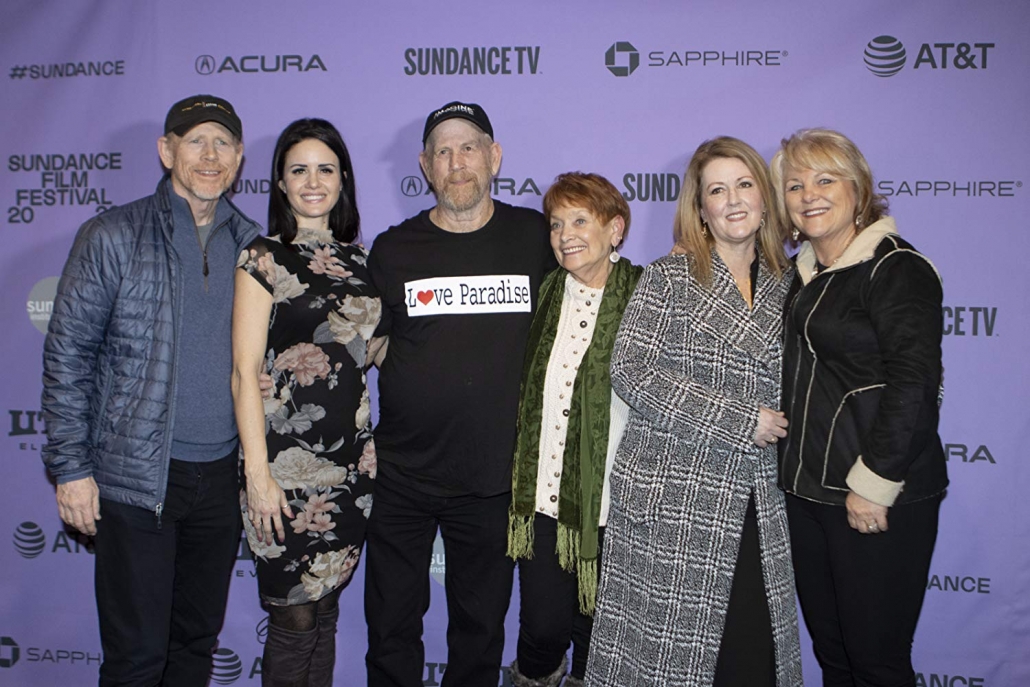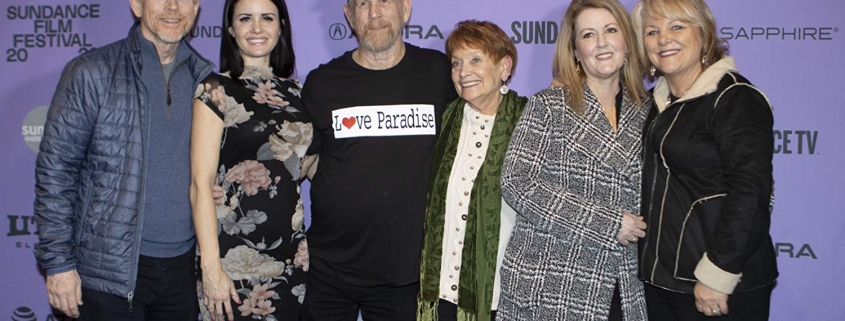Sundance’s ‘Rebuilding Paradise’ may be Howard’s best film yet

Few directors are as simultaneously inoffensive and respected as USC alumnus Ron Howard. As far as Academy Awards winners go, the man behind the camera of “A Beautiful Mind” is arguably the most reliable and least risky — in terms of both his creative and personal life — of the past two decades. There’s a chance that even fellow Oscar-winner Frank Capra is rolling around in his grave somewhere, next to his little gold statues, screaming “Come on, Howie! Stop playing it so safe!”
Howard does not have a signature writing style like Quentin Tarantino, a signature shot composition like Alejandro Iñárritu or a signature subject matter like Martin Scorsese. But he’s universally cited as a delight to work with. In fact, his reputation as a good guy is probably the most reputable part of his legacy as a filmmaker. What he lacks in flourish, he makes up for in unconditional empathy for his actors and, consequently, his characters.
His acute focus on humanity plays out perfectly in his latest film. One of the most anticipated documentaries of the 2020 Sundance Film Festival, “Rebuilding Paradise” is a harrowing portrait of the approximately 26,000 Northern California residents whose lives were upended by the Camp fire of 2018. The feature is all the more heartbreaking and thought-provoking when its mercilessly cruel series of circumstances are juxtaposed — not by a complex mastery of cinematic language or an abstract approach to the disaster-relief movie but by Howard’s simple, unabridged kindness.
“Rebuilding Paradise” feels immersive, multidimensional and real from the very first frame. Its opening sequence is downright apocalyptic: An ember grows into a blaze, which grows into an all-consuming inferno, claiming more and more structures and lives with each passing minute. Before the title card even hits, we watch, mostly through personal iPhone videos and dashcam footage, people swiftly evacuating from their homes. It is one of the most gut-wrenching sequences ever captured in a film.
And what’s so haunting is the fact that most of the sequence could be done in silence and still be equally effective. Howard didn’t sign on to make the documentary until he knew about the reconstruction of Paradise (and no, that’s not just a cute title, the town is actually named Paradise). So, the cinematography of the smoky destruction is clunky at best. But Howard knows that stakes don’t come from horrific visuals — they come from how people feel about those visuals.
Even when the screen is mostly just a red fog, hearing recorded 911 conversations of a woman unsure of how to evacuate her disabled father in time is petrifying. It’s also petrifying to hear the horns of congested traffic and people praying to flee the scene before their car windows literally melt. The audience can understand what’s happening through the sound of cops, desperate to help but faced with horror outside of their control, encouraging certain damned parties to evacuate on foot because they simply will not last long enough otherwise. And it’s hard not to weep along to a vision so horrid.
The rest of “Rebuilding Paradise” is composed of watching people grieve and reinvent. It’s not a new post-disaster narrative. In fact, it’s pretty much the only post-disaster narrative.
We’ve seen it in New Orleans after Hurricane Katrina. We’ve seen it in Haiti after the earthquake — and those communities had way bigger hills to climb after the devastation than Paradise, but again, Howard’s skill is not showing scale, it’s showing people. His crew manages to make the subjects of this documentary feel safe and cared for, which many attendees attested to during the Q&A after the film’s debut screening.
In turn, his subjects feel comfortable sharing private and more complex thoughts with us. For example, one resident was ready to have a child with her significant other, and even though her house wasn’t burned, Paradise was no longer a healthy, suitable place to raise a child. Does she move? Where does she move to? How does she accumulate the resources to move? How will she feel if she abandons her home to move? These are difficult questions that lesser filmmakers would be too focused on capturing the damage to raise. Thank God, though, that Howard is a master behind the camera and explored those thoughts.
This film is also surprisingly and unintentionally political. Because of Howard’s good rapport with the community, he’s able to capture members at their lowest lows. Many of these characters hit rock bottom at surprising times in their journey. The heroes of “Rebuilding Paradise” do not necessarily have happy endings: Many get what they want but lose more than they bargained for along the way. By the end, the theme of the film is less about overcoming hardship through elbow grease and more about how trying it is to fix something that’s already broken. As the saying goes, “an ounce of prevention is better than a pound of cure.”
It’s no secret that global warming was a major contributor to the Camp Fire. Many people will walk away with the message that one of the stars of the documentary, Carly Jean Ingersoll, gave in the aforementioned Q&A.
“Instead of reacting to these [climate] crises, what can we do before?” Ingersoli said.
Nobody, including himself would have expected Howard to make a film with such an effective political message. He insists that he is not a “policy maker,” which makes him almost the perfect person to deliver such a timely and important message about saving the planet. He doesn’t try to bombard the audience with political statements. He doesn’t alienate. The politics aren’t the center of his filmmaking — the people are the center. But watching these people so intimately, it’s hard not to be inspired to get involved.


